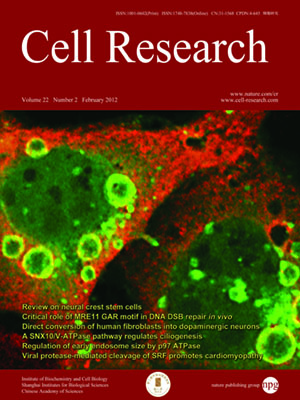
Volume 22, No 2, Feb 2012
ISSN: 1001-0602
EISSN: 1748-7838 2018
impact factor 17.848*
(Clarivate Analytics, 2019)
Volume 22 Issue 2, February 2012: 285-287
RESEARCH HIGHLIGHTS
K-Ras and mitochondria: Dangerous liasons
Jiri Neuzil1,2, Jakub Rohlena2 and Lan-Feng Dong1
1Apoptosis Research Group, School of Medical Science and the Griffith Health Institute, Griffith University Gold Coast Campus, Southport, 4222 Qld, Australia
2Institute of Biotechnology, Academy of Sciences of the Czech Republic, Prague, Czech Republic
Correspondence: Jiri Neuzil,(j.neuzil@griffith.edu.au)
It is well documented that the K-RAS oncogene efficiently transforms non-malignant cells, and there is some evidence for the role of mitochondria in this process. Now Peng Huang and colleagues show that K-Ras induction results early on in mitochondria assuming the phenotype consistent with the so-called Warburg effect, i.e., increased glycolysis and attenuated oxidative phosphorylation. Thus the K-Ras protein capable of swift induction of phenotypic changes typical of cancer cells, yet these changes are reversible, and for cells to irreversibly reach their full malignant potential a much longer K-Ras expression is required, implicating mitochondria in the longer-term effects of the oncogene.
Cell Research (2012) 22:285-287. doi:10.1038/cr.2011.160; published online 27 September 2011
FULL TEXT | PDF
Browse 2177


